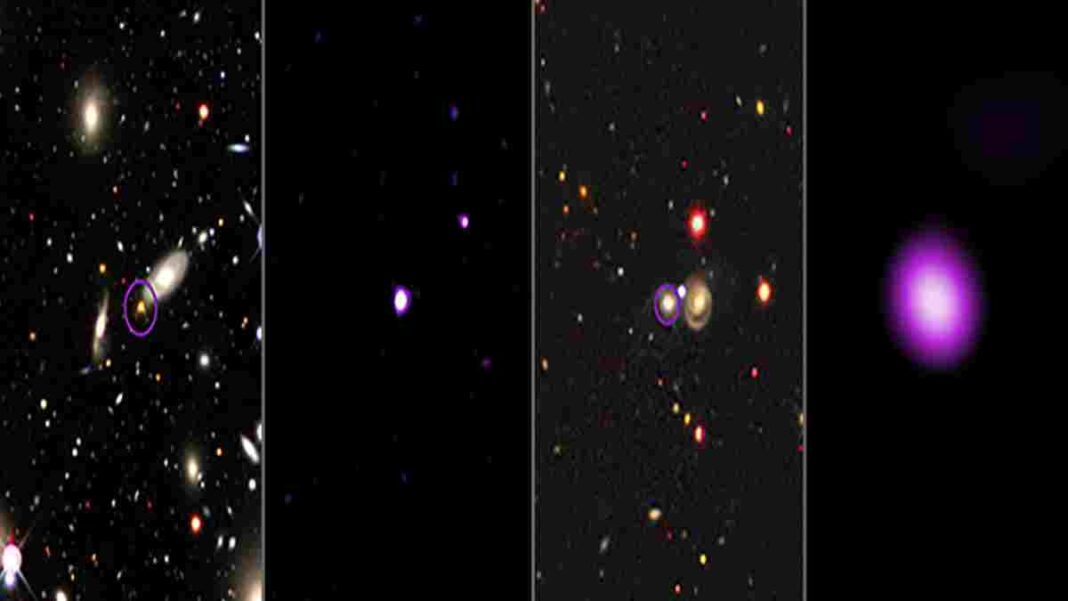UNITED STATES: More than 400 previously unidentified black holes that are engulfing stars and material in the center of galaxies have been found by astronomers. It appears that until now, many of the newly discovered black holes found by using NASA’s Chandra X-ray Observatory were shrouded in dust cocoons.
The mass of the sun is multiplied by millions, or perhaps billions, in the supermassive black holes. According to NASA, although it is thought that virtually all huge galaxies have massive black holes at their centers, only some of them will be actively consuming radiation, and some will be concealed beneath dust and gas.
“Astronomers have already found numerous black holes, but many of them are still undiscovered,” according to a press release from Dong-Woo Kim of the Center for Astrophysics.
“Our research has found a missing demographic and given us insight into how they behave,” the speaker concluded.
Galaxies that appear regularly in optical light, with light from stars and gas but without the distinguishing visual signs of a quasar, but shine strongly in X-rays, have been known to scientists for almost 40 years.
These are referred to as “XBONGs,” or “X-ray brilliant optically normal galaxies.” The scientists looked through a database of more than three lakh brilliant X-ray objects recorded by Chandra to learn more about these enigmatic things.
They next looked for X-ray-bright but optically normal objects using optical photographs of the night sky from the Sloan Digital Sky Survey.
According to Kim, the researchers’ discovery of 820 XBONGs between 550 million and 7.8 billion light-years from Earth represents the greatest sample ever gathered.
In a press release, co-author Alyssa Cassity, a Ph.D. student at the University of British Columbia, stated, “You don’t get to announce that you found a black hole very often. Therefore, realizing that we have uncovered hundreds of them is incredibly thrilling.”
Also Read: NASA and Roscosmos Join Hands to Bring Back Astronauts from Soyuz



